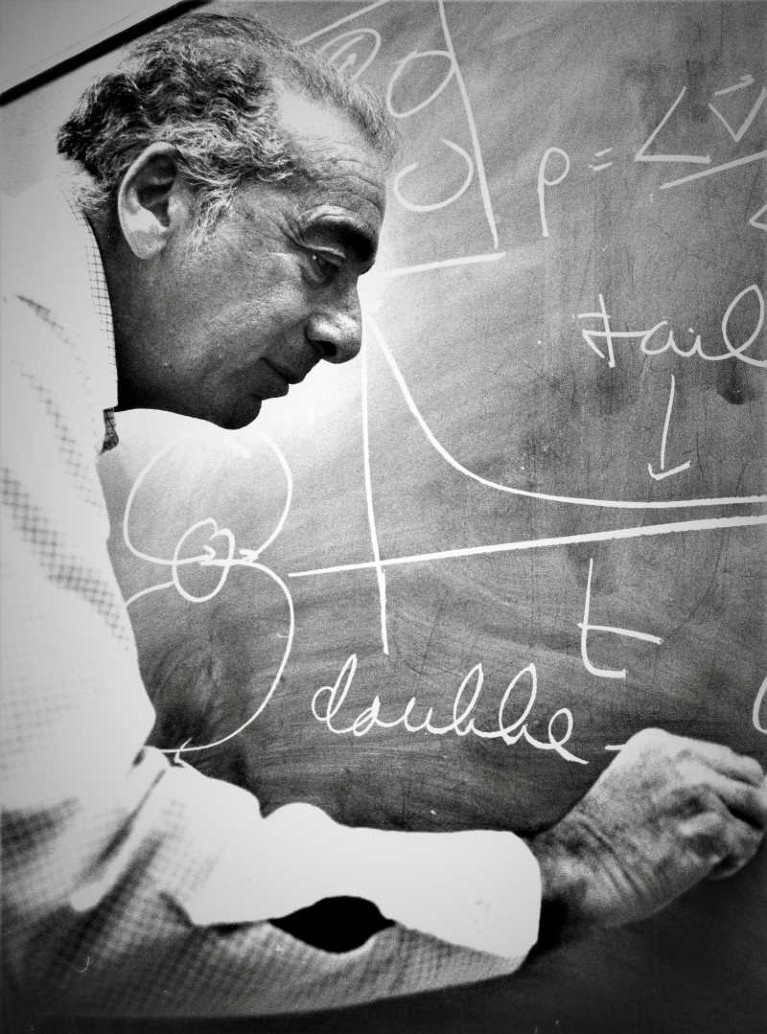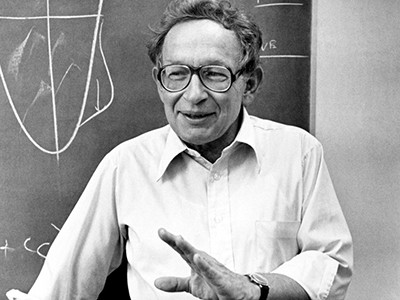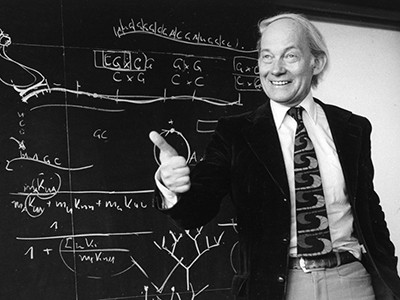
Credit: LLNL
Berni Alder pioneered computer simulation, in particular of the dynamics of atoms and molecules in condensed matter. To answer fundamental questions, he encouraged the view that computer simulation was a new way of doing science, one that could connect theory with experiment. Alder’s vision transformed the field of statistical mechanics and many other areas of applied science.
Alder, who died on 7 September aged 95, was born in Duisburg, Germany. In 1933, as the Nazis came to power, his family moved to Zurich, Switzerland, and in 1941 to the United States. After wartime service in the US Navy, Alder obtained undergraduate and master’s degrees in chemistry from the University of California, Berkeley. While working for a PhD at the California Institute of Technology in Pasadena, under the physical chemist John Kirkwood, he began to use mechanical computers to explore how molecules in solids and liquids moved in relation to each other.
The question he set himself, which occupied him for the following two decades, was: “How does a system of hard spheres [representing molecules] behave under various conditions?” During his PhD, he and the computer scientist Stan Frankel developed an early Monte Carlo algorithm — one in which the spheres are given random displacements — to calculate the properties of the hard-sphere fluid. The advance was scooped by Nicholas Metropolis and his group at the Los Alamos National Laboratory in New Mexico.
Philip W. Anderson (1923–2020)
After completing his PhD in 1951, Alder returned to Berkeley to teach chemistry. In 1953, he began working as a consultant at the University of California Radiation Laboratory at Livermore (later the Lawrence Livermore Laboratory), newly founded by nuclear physicists Edward Teller and Ernest Lawrence, and in 1955 he joined the staff. The laboratory was well funded as part of the US effort to promote innovation during the cold war. Alder and his group used the spare capacity of the increasingly powerful electronic computers that the lab deployed in the design of nuclear weapons.
Alder returned to his interest in the properties of systems of spheres. In the mid-1950s, in collaboration with his Livermore colleague Thomas Wainwright, he developed algorithms to simulate many-body systems. The technique they used, molecular dynamics, modelled a sequence of collisions in a system of spheres and followed the state of the system over time. They considered hard spheres because the dynamics could be exactly determined, silencing criticism that the results were the product of inaccurate computer arithmetic. The advantage of this technique over Monte Carlo methods was, as its name suggests, that it could address the dynamics of many-particle systems as well as their equilibrium properties.
The invention of molecular dynamics is Alder’s greatest legacy, and has led to applications in materials science, biochemistry and biophysics, as well as physics and chemistry. Two of his fundamental contributions to statistical mechanics stand out, and convinced the scientific community of the technique’s utility. Until he published his findings, solids were thought to exist as a result of attractive interactions between molecules: the regular arrangement of atoms in a crystal lattice is the configuration that minimizes their energy.
Alder and Wainwright (and others using Monte Carlo methods) showed in 1957 that as systems of hard spheres are compressed, they undergo a transition from liquid to solid. Since hard spheres do not have attractive interactions, freezing maximizes their entropy rather than minimizing their energy; the regular arrangement of spheres in a crystal allows more space for them to move than does a liquid.
A second advance concerned how non-equilibrium fluids approach equilibrium: Albert Einstein, for example, assumed that fluctuations in their properties would quickly decay. In 1970, Alder and Wainwright discovered that this intuitive assumption was incorrect. If a sphere is given an initial push, its average velocity is found to decay much more slowly. This caused a re-examination of the microscopic basis for hydrodynamics.
Alder extended the reach of simulation. In molecular dynamics, the forces between molecules arise from the electronic density; these forces can be described only by quantum mechanics. Without solving the quantum problem, molecular dynamics would not be able to make precise predictions. The development of very accurate simulation methods for extended quantum systems is an unsolved problem to this day, although excellent results have been obtained for some situations. The simulations of a uniform system of electrons that I performed with Alder in 1980 represent one such situation. Our results for the correlation energy of electrons underlie the theory used in most studies of the microscopic properties of condensed materials.
In 1963, Alder, with Teller and others, helped to set up the Department of Applied Science at the University of California, Davis, to establish a graduate-training programme associated with the Radiation Laboratory at Livermore. Alder was also one of the founders and the editor of the Journal of Computational Physics.
Berni Alder’s personality was unique. He preferred intuitive understanding over mathematical derivations, always focusing on what he regarded as the fundamental scientific problems, not on short-term progress. He was never the programmer, but the impresario of younger colleagues, pushing them to work on difficult problems through his curiosity and intense interest.


 Philip W. Anderson (1923–2020)
Philip W. Anderson (1923–2020)
 Manfred Eigen (1927–2019)
Manfred Eigen (1927–2019)
 David J. Thouless (1934-2019)
David J. Thouless (1934-2019)






